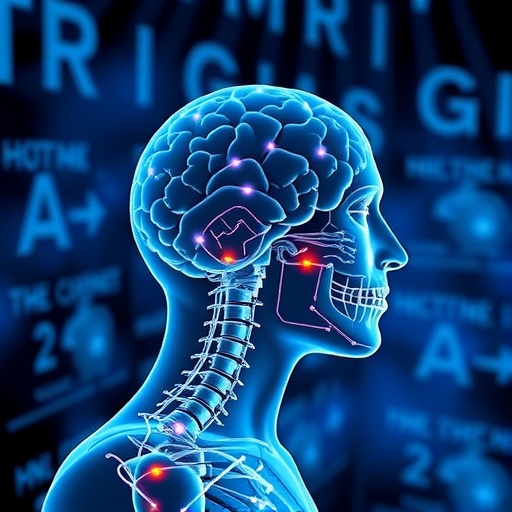
In the rapidly evolving landscape of medical technology, the diagnosis of Parkinson’s disease (PD) stands poised for a transformative leap through the integration of machine learning (ML) methodologies. Parkinson’s disease, a neurodegenerative disorder characterized by complex motor and non-motor symptoms, presents an enduring challenge for early and accurate diagnosis due to its heterogeneous nature. Recent comprehensive analyses highlight critical trends, unresolved issues, and formidable challenges inherent in deploying ML techniques in clinical and research settings aimed at diagnosing PD. These insights underscore the urgency for novel, robust, and clinically translatable approaches leveraging the power of artificial intelligence.
One of the foremost obstacles in ML-oriented PD diagnosis is the glaring absence of standardized protocols or universally accepted methodologies. Unlike many traditional diagnostic tools grounded in established clinical criteria, ML applications must navigate a vast, varied data landscape encompassing clinical records, sensor data, genetic profiles, and imaging modalities. The complexity of integrating such multifaceted datasets demands powerful algorithms capable of discerning subtle, non-linear patterns indicative of disease onset and progression. However, this endeavor is hampered by pervasive data imbalance, where healthy controls typically outnumber PD cases, and by concerns related to data normalization and preprocessing that directly influence model accuracy and generalization.
Closely tied to data issues is the critical problem of dataset generalizability. While numerous studies operate on well-curated datasets, such data often stem from narrowly defined populations or specific clinical environments, severely limiting the applicability of resulting models to broader, more diverse patient cohorts. The reliance on small sample sizes and homogenous datasets has bred caution among researchers, as externally validating models on independent datasets remains scant. Cross-validation across differing demographics, ethnicities, and clinical presentations is imperative to ensure diagnostic models possess real-world efficacy. Without this, ML models risk becoming overly specialized tools with limited clinical utility, potentially misleading health care providers and patients alike.
.adsslot_RMe45tdZEu{width:728px !important;height:90px !important;}
@media(max-width:1199px){ .adsslot_RMe45tdZEu{width:468px !important;height:60px !important;}
}
@media(max-width:767px){ .adsslot_RMe45tdZEu{width:320px !important;height:50px !important;}
}
ADVERTISEMENT
Moreover, the frontier of ML in PD diagnostics calls for a paradigm shift beyond conventional analytical strategies toward more sophisticated frameworks. Current limitations include inadequate capacity to model complex interactions among diverse data sources, especially those with non-linear correlations and high dimensionality. Cutting-edge machine learning architectures, particularly deep learning (DL) models, offer promise in addressing these challenges by uncovering latent feature representations and intricate dependencies beyond human-designed heuristics. Yet, these advanced methods demand extensive computational resources and sophisticated regularization techniques to avoid overfitting and ensure reproducibility.
An overlooked yet pivotal aspect is the scant attention paid to linguistic and cultural diversity in vocal and speech-based datasets prevalent in recent PD diagnostic models. Vocal biomarkers hold considerable promise due to ease of acquisition and non-invasive monitoring possibilities. However, the majority of vocal analyses have been confined to single-language datasets, thereby handicapping model robustness in multilingual contexts. Furthermore, the underrepresentation of varied ethnic and racial groups introduces bias, further eroding the generalizability and fairness of voice-based diagnostic tools. Addressing these limitations requires inclusive dataset curation and rigorous cross-linguistic validation protocols.
Parallel to these diagnostic obstacles is the promising yet underexplored sphere of personalized treatment prediction driven by ML. The heterogeneity in PD symptomatology, influenced by factors such as age, genetic makeup, gender, and lifestyle, necessitates models capable of individualized prognostics. Developing such precision models could revolutionize therapeutic strategies, enabling early identification of likely disease trajectories and tailored interventions. Early studies probing this domain signal a compelling frontier for future research, albeit contingent upon vast, high-quality multi-modal datasets integrating clinical, biological, and behavioral variables.
Wearable technologies, with their burgeoning presence in consumer health devices, represent an untapped reservoir for continuous PD symptom monitoring and early detection. Smartwatches, sensor-embedded wristbands, and other portable devices create streams of real-world data capturing motor fluctuations and non-motor symptom dynamics. Yet, their widespread clinical adoption remains limited due to technical challenges such as sensor accuracy, user compliance, battery longevity, and data privacy concerns. Overcoming these hurdles is seminal for transitioning wearables from experimental tools to integral components of PD management and diagnosis.
The integration of multimodal analysis, synthesizing diverse data streams—including sensor outputs, neuroimaging, biochemical assays, and clinical evaluations—embodies the future paradigm for comprehensive PD diagnostics. Multimodal machine learning models promise increased sensitivity and specificity by exploiting complementary information across modalities, compensating for limitations intrinsic to any single data source. However, the field lacks fully developed fusion techniques capable of dynamically combining heterogeneous data for accurate disease staging and progression monitoring. Current studies emphasize the theoretical merit of multimodal approaches, but pragmatic, validated frameworks are missing, spotlighting a frontier ripe for innovation.
A persistent hurdle hampering progress across all fronts is the scarcity of accessible, high-quality, longitudinal datasets that encompass the full clinical spectrum of Parkinson’s disease. Many datasets remain proprietary, fragmented across institutions, or limited in diversity, restricting researchers’ ability to train, validate, and benchmark machine learning models effectively. Without open data sharing and collaborative infrastructure, the field risks stagnation, encumbered by siloed efforts and reproducibility challenges. Initiatives fostering standardized data collection, ethical sharing, and regulatory frameworks are essential to harness collective intelligence and accelerate breakthroughs.
Data preprocessing, particularly regularization and normalization, is a deceptively complex yet indispensable component in developing robust ML models. These techniques mitigate overfitting, ensure stable convergence during training, and standardize inputs across subjects and measurement modalities. Despite their critical role, there is a noticeable inconsistency in applying and reporting these methods within the community, highlighting an area poised for systematic refinement and methodological standardization. Future research must prioritize transparent, reproducible data handling pipelines to fortify the credibility and clinical translation potential of ML diagnostic tools.
Another nontrivial challenge lies in addressing dataset imbalance, a notorious issue where underrepresented classes—often PD patients exhibiting atypical symptoms or at early disease stages—are overshadowed by majority classes such as healthy controls. This skew can bias models toward the dominant class, reducing sensitivity to subtle, early signs of PD. Innovative techniques, including synthetic data augmentation, cost-sensitive learning, and ensemble approaches, have been proposed but require rigorous validation within clinical contexts. Ensuring equitable model performance across the disease spectrum is paramount for achieving reliable diagnostic aids.
The computational intensity of state-of-the-art ML and DL models compounds these challenges. High-performance computing resources required for training and deploying deep networks may be scarce, especially in resource-limited settings or smaller clinics. This limitation restricts equitable access to cutting-edge technology and may inadvertently widen existing healthcare disparities. Cloud-based platforms, edge computing solutions, and resource-optimized models offer potential paths forward but must be developed and vetted with clinical integration in mind.
Compounding technical barriers are significant ethical and regulatory considerations. ML-driven research in PD entails the handling of sensitive patient information, invoking stringent privacy requirements and necessitating compliance with diverse jurisdictional regulations. Navigating these complexities without compromising data utility demands innovative privacy-preserving techniques such as federated learning and differential privacy. Moreover, ethical frameworks ensuring transparent algorithmic decision-making and accountability are critical to foster clinician and patient trust and to prevent inadvertent biases influencing diagnosis and treatment.
Bridging the gap between research prototypes and clinical application emerges as a multifaceted challenge requiring multidisciplinary collaboration. Even highly accurate models face obstacles when they lack user-centric design, interpretable outputs, or seamless integration with existing clinical workflows. To maximize real-world impact, ML tools must balance performance with usability, reliability, and clinician acceptability. Pilot implementations, co-design with healthcare professionals, and rigorous real-world evaluations are necessary steps towards embedding AI-powered diagnostics into routine neurological care.
Robust model validation protocols stand as pillars upholding the scientific rigor of ML-based PD diagnostics. External validation against completely independent cohorts, multi-site studies, and k-fold or nested cross-validation approaches are crucial to guard against overfitting and data leakage. Detailed reporting of preprocessing steps, dataset composition, and segmentation strategies underlines transparency and reproducibility. Developing community standards around evaluation metrics that go beyond accuracy—to include F1-score, balanced accuracy, ROC-AUC, and Matthews correlation coefficient—further enriches comparative assessments and highlights nuanced model performance under imbalanced clinical conditions.
Looking forward, the horizon of PD diagnostics gleams with promising technological trends poised for substantial impact. Multimodal brain MRI, leveraging structural and functional imaging, enriched through ML algorithms, heralds improved detection of prodromal PD stages and finer-grained characterization of disease heterogeneity. Complementary advances in 3D dopaminergic imaging techniques promise precise mapping of nigrostriatal pathways, enabling refined early diagnosis, patient stratification, and real-time treatment monitoring. These innovations hold the potential to revolutionize clinical paradigms by rendering invisible neurochemical changes visible and quantifiable.
Genetic profiling and biomarker discovery offer another promising frontier, where large-scale genomic data integrated with clinical phenotypes via ML models can elucidate disease mechanisms and predict progression. Identifying predictive genetic markers not only enhances diagnostic precision but could unveil novel therapeutic targets and pave the way for truly personalized medicine. Pioneering research in this domain calls for expansive, population-diverse datasets and sophisticated analytic pipelines capable of unraveling complex gene-environment interactions.
Finally, capturing the profound variability in PD symptom presentation through integrated, multimodal ML models stands to significantly enhance both diagnostic accuracy and therapeutic tailoring. By assimilating data streams spanning imaging, audio analysis, wearable sensor outputs, and detailed clinical evaluations, ML models can map individualized disease trajectories. Advancing early detection initiatives and refining classification systems for Parkinsonian syndromes will empower clinicians with actionable insights amid the disease’s multifaceted manifestations, ultimately improving patient quality of life.
In sum, the intersection of machine learning and Parkinson’s disease diagnosis is a fertile ground flush with potential yet laden with intricate challenges. Realizing the promise of AI-driven diagnostic tools demands concerted efforts addressing data diversity and accessibility, methodological sophistication, ethical stewardship, and clinical integration. As research endeavors forge ahead, the marriage of technology and medicine offers hope for earlier detection, personalized therapies, and, ultimately, better outcomes for those living with Parkinson’s disease.
Subject of Research: Machine learning applications in the diagnosis of Parkinson’s disease, focusing on datasets, methodologies, challenges, and future directions.
Article Title: Machine learning for Parkinson’s disease: a comprehensive review of datasets, algorithms, and challenges.
Article References:
Shokrpour, S., MoghadamFarid, A., Bazzaz Abkenar, S. et al. Machine learning for Parkinson’s disease: a comprehensive review of datasets, algorithms, and challenges. npj Parkinsons Dis. 11, 187 (2025). https://doi.org/10.1038/s41531-025-01025-9
Image Credits: AI Generated
Tags: Artificial Intelligence in Medicinechallenges in machine learning applicationsclinical data integration challengesdata imbalance in medical researchgenetic profiling in Parkinson’s diseaseinnovative approaches to PD diagnosismachine learning in healthcareneurodegenerative disorder researchnon-linear patterns in medical dataParkinson’s disease diagnosis technologyrobust algorithms for disease detectionstandardized protocols in medical diagnostics


